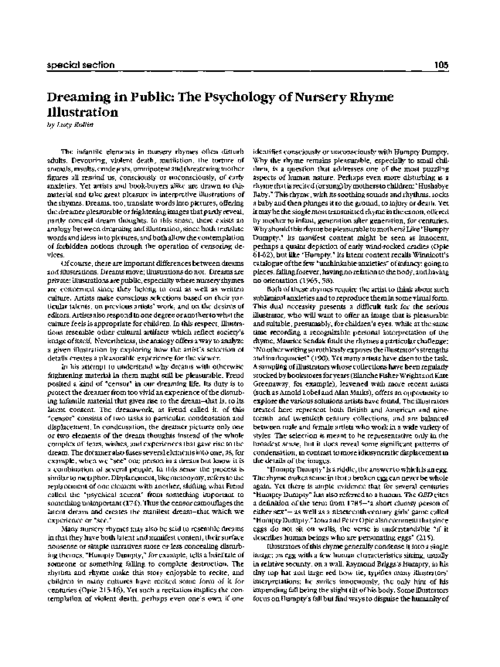2017年4月15日托福口语|2017年4月15日托福听力背景知识:婴儿对韵律的感知
托福考试频道为大家推出【2017年托福考试课程!】考生可点击以下入口进入免费试听页面!足不出户就可以边听课边学习,为大家的梦想助力!
【手机用户】→点击进入免费试听>>
【电脑用户】→点击进入免费试听>>
2017年4月15日托福听力背景知识:婴儿对韵律的感知
Dreaming in Public:
The Psychology of Nursery Rhyme Illustration
Lucy Rollin (bio)
The infantile elements in nursery rhymes often disturb adults. Devouring, violent death, mutilation, the torture of animals, insults, crude jests, omnipotent and threatening mother figures all remind us, consciously or unconsciously, of early anxieties. Yet artists and book-buyers alike are drawn to this material and take great pleasure in interpretive illustrations of the rhymes. Dreams, too, translate words into pictures, offering the dreamer pleasurable or frightening images that partly reveal, partly conceal dream thoughts. In this sense, there exists an analogy between dreaming and illustration, since both translate words and ideas into pictures, and both allow the contemplation of forbidden notions through the operation of censoring devices.
Of course, there are important differences between dreams and illustrations. Dreams move; illustrations do not. Dreams are private; illustrations are public, especially where nursery rhymes are concerned since they belong to oral as well as written culture. Artists make conscious selections based on their particular talents, on previous artists' work, and on the desires of editors. Artists also respond in one degree or another to what the culture feels is appropriate for children. In this respect, illustrations resemble other cultural artifacts which reflect society's image of itself. Nevertheless, the analogy offers a way to analyze a given illustration by exploring how the artist's selection of details creates a pleasurable experience for the viewer.
In his attempt to understand why dreams with otherwise frightening material in them might still be pleasurable, Freud posited a kind of "censor" in our dreaming life. Its duty is to protect the dreamer from too vivid an experience of the disturbing infantile material that gives rise to the dream—that is, to its latent content. The dreamwork, as Freud called it, of this "censor" consists of two tasks in particular condensation and displacement. In condensation, the dreamer pictures only one or two elements of the dream thoughts instead of the whole complex of fears, wishes, and experiences that gave rise to the dream. The dreamer also fuses several elements into one, as, for example, when we "see" one person in a dream but know it is a combination of several people. In this sense the process is similar to metaphor. Displacement, like metonymy, refers to the replacement of one element with another, shifting what Freud called the "psychical accent" from something important to something unimportant (174). Thus the censor camouflages the latent dream and creates the manifest dream—that which we experience or "see."
Many nursery rhymes may also be said to resemble dreams in that they have both latent and manifest content, their surface nonsense or simple narratives more or less concealing disturbing themes. "Humpty Dumpty," for example, tells a brief tale of someone or something falling to complete destruction. The rhythm and rhyme make this story enjoyable to recite, and children in many cultures have recited some form of it for centuries (Opie 215-16). Yet such a recitation implies the contemplation of violent death, perhaps even one's own if one identifies consciously or unconsciously with Humpty Dumpty. Why the rhyme remains pleasurable, especially to small children, is a question that addresses one of the most puzzling aspects of human nature. Perhaps even more disturbing is a rhyme that is recited (or sung) by mothers to children: "Hushabye Baby." This rhyme, with its soothing sounds and rhythms, rocks a baby and then plunges it to the ground, to injury or death. Yet it may be the single most transmitted rhyme in the canon, offered by mother to infant, generation after generation, for centuries. Why should this rhyme be pleasurable to mothers? Like "Humpty Dumpty," its manifest content might be seen as innocent, perhaps a quaint depiction of early wind-rocked cradles (Opie 61-62), but like "Humpty," its latent content recalls Winnicott's catalogue of the few "unthinkable anxieties" of infancy: going to pieces, falling forever, having no relation to the body, and having no orientation (1965, 58).
Both of these rhymes require the artist to think about such subliminal anxieties and to reproduce them in some visual form. This dual necessity presents a difficult task for the serious illustrator, who...

|
|
|
